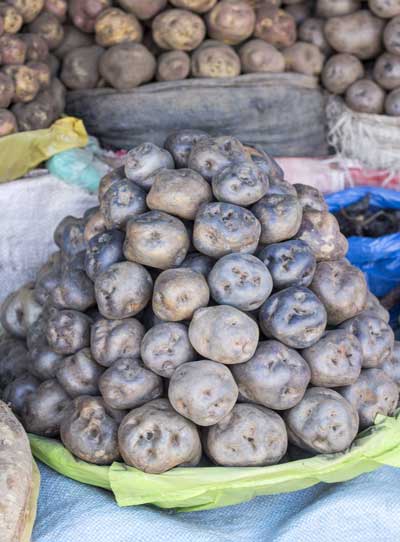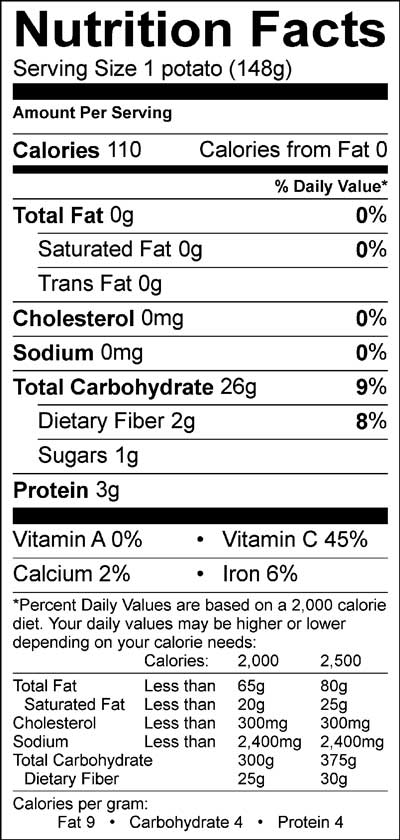Peruvian Potatoes
The potato is one of the most important food crops in the world. It comes after wheat, rice, corn, and sugarcane on the list of most consumed crops worldwide. Although the tuber was a startling novelty at first and actually frightening to many people, this crop has become a staple for many cultures because of its highly productive harvests. It is much more productive than grains, for example.
Let’s take a look at some interesting facts about this Peruvian food and some popular & delicious dishes made with it.
HISTORY OF THE POTATO

Scientific evidence shows that potatoes were domesticated in the High Andes of south-eastern Peru ad north-western Bolivia as early as 8,000 years ago (soon after people migrated to the area). The oldest archaeological findings were made around Lake Titicaca in the valley of Chulca.
The potato developed into an important staple food and the main energy source of the early Peruvian cultures. The Spanish sailors who returned from Peru and other countries in the New World brought back potatoes to Spain around 1570. From there the Potato travelled to places like England, and of course, Ireland, which has a history tied to this humble tuber. The dependence on one single type of potato for most of the calorific needs of the Irish in the 1800s proved disastrous as blight attacked the potato variety. Famine ensued and one million people died.
The Inca empire, which was once the largest empire in the world, was fueled by a constant source of high-quality energy in the form of potatoes. A quarter kilo (8 oz) potato contains around 100 calories.
POTATOES IN PERU TODAY
If you read the book or saw the movie “The Martian” starring Matt Damon you’ll remember that a lot of the movie centered around main character Mark Watney’s attempts to grow Potatoes inside an astronaut habitat. Potatoes are hardy plants and NASA does indeed intend on using potatoes for food on Mars one day.
In fact, NASA scientists are currently studying how the crop reacts to a simulated martian environment, in none other than Lima, Peru. They are using soil from the Andes mountains and many different types of potato to try and find the ones that will survive conditions in space best. Potatoes were grown in space all the way back in 1995, and in fact, were the first “vegetable” to be grown successfully outside of planet earth.
Tubers (potatoes, ollucus, yacon) are ideal candidates for “space food” for several reasons. Potatoes are 1. high in carbohydrate and contain some protein (around 10-15%), 2. a highly productive crop compared to other staples, 3. easily prepared with minimal preparation and processing, 4. easy to grow in a small space if properly planned.
The potato is still an important food staple and field crop in Peru. Some estimates put the number of species or types of spud at almost 4000. Most of these are still only grown in Peru. Elsewhere in the world, people tend to favor one or two varieties. If you find yourself in Peru don’t miss the chance to try the Pink, Sweet, Purple, Huayro Black, and Chuño versions or varieties, many of which are not sold outside of the country.
In the United States, a potato museum in the capital, Washington D.C., has a huge collection of exhibits for anyone interested in the history of the potato, especially in the US.
POTATO NUTRITION

The humble tuber often gets a bad rap among health-conscious eaters. But a food that comes directly from the ground, involves no processing in its barest form and only needs to be cooked can’t be all that bad. Studies have attempted to find a link between the potato and cardio vascular but nothing conclusive has been found.
Potato calories are sometimes seen as bad calories and it’s understandable. The food ranks pretty high on the Glycaemic index, an index showing the rate at which certain foods increase blood sugar in the body. White mashed potatoes certainly are not ideal foods for diabetics. Sweet potatoes fare much better than the white potato variety. Unprocessed potatoes with skins left on sit side-by-side on the scale with many common vegetables.
Potatoes contain nutrients such as Carbohydrates, Fiber, Potassium, Magnesium, and Iron. Vitamin B6 is present in high quantities. Potatoes also contain high levels of copper (helps with the formation of collagen) and vitamin C (almost 50% of RDA in one potato)
There is some evidence to suggest that colored spuds, such as the purple variety found in Peru contain important antioxidant-rich nutrients.
Try to buy potatoes with the soil still clinging to the skin. The soil acts as a barrier to disease and infection. When the protective layer is removed from a potato it is easier for damp conditions to produce bacteria directly on the skin. Store potatoes in a dark, dry place and definitely not in the refrigerator.
Peruvian purple potatoes contain high levels of nutrients not found in the perfectly formed, clean, white potato sold in supermarkets in the west. The purple potato, commonly found in Peruvian markets, might not appeal to consumers in the west, but it’s packed with nutrients and cancer-fighting properties. Unfortunately, we choose aesthetics over nutritional value and the single-species, overdeveloped potato wins. We are the losers in the long run as we are depriving ourselves of a nutritional powerhouse food purely because of how it looks.
NIGHTSHADE FAMILY
Potatoes belong to the nightshade family, along with other edible nightshades such as the tomato, peppers, and eggplants. The vast majority of nightshades are poisonous. The fact that every edible nightshade has been cultivated over many years from inedible ancestors to produce fewer toxins leads some people to avoid potatoes and the other foods in this group. Originally potatoes were poisonous to humans and in fact, the leaves are still inedible. The toxins were removed through genetic selection but the potential is still there for adverse effects on humans, especially those with auto-immune diseases. I recommend against eating potatoes with any kind of green spots or green colouration.
There you go!! Did you know there was over 4000 types of potatoes??
Well... now you know😉
Because we care
#teambousehouse
#ocrealestate
#REMAX



